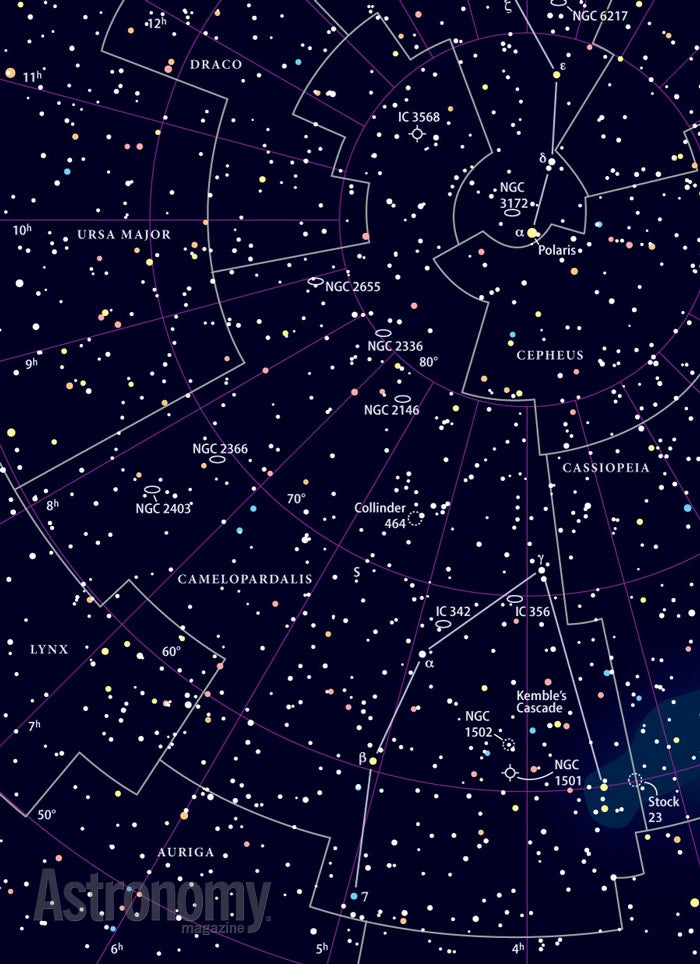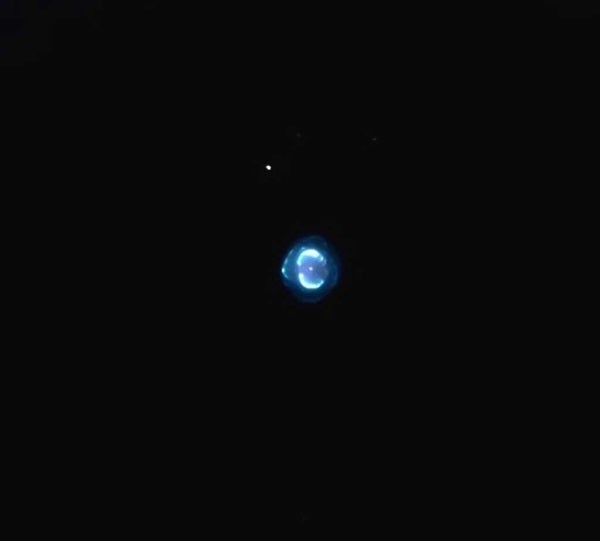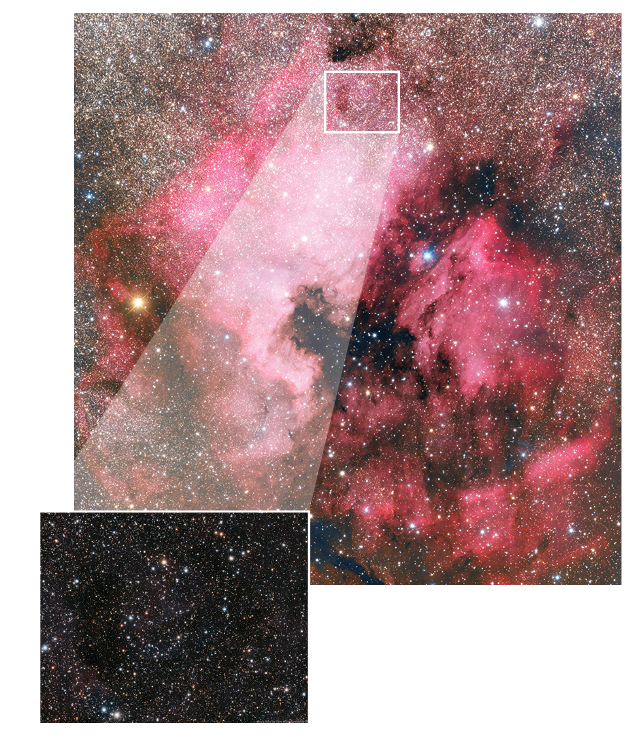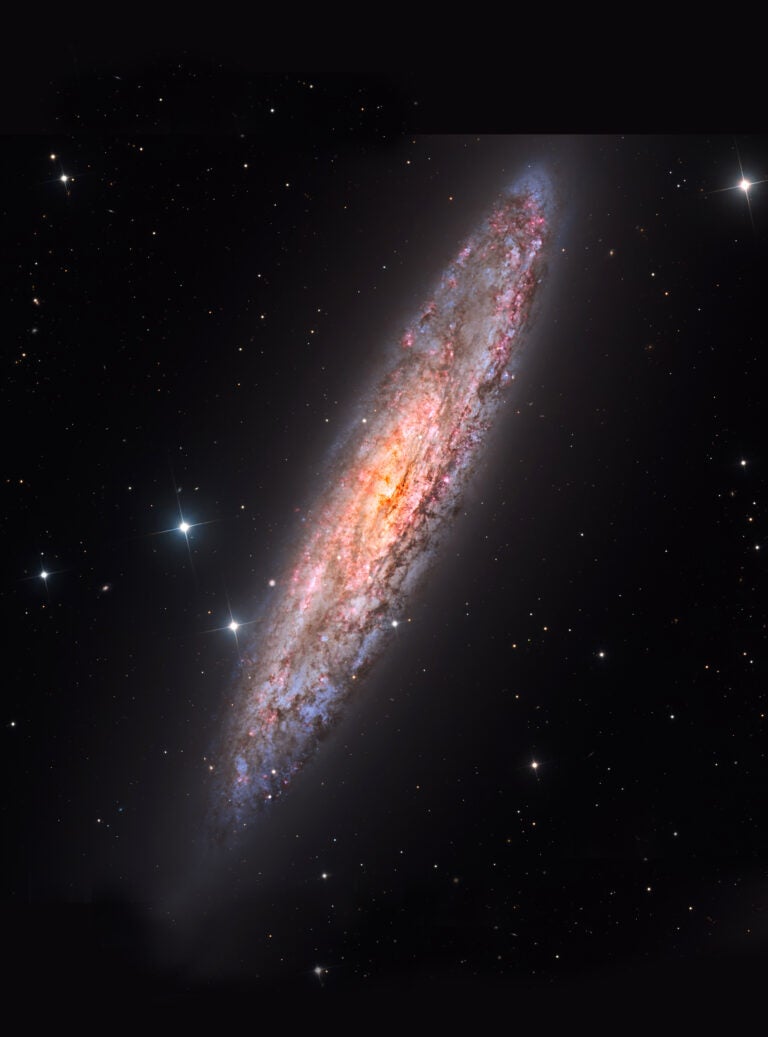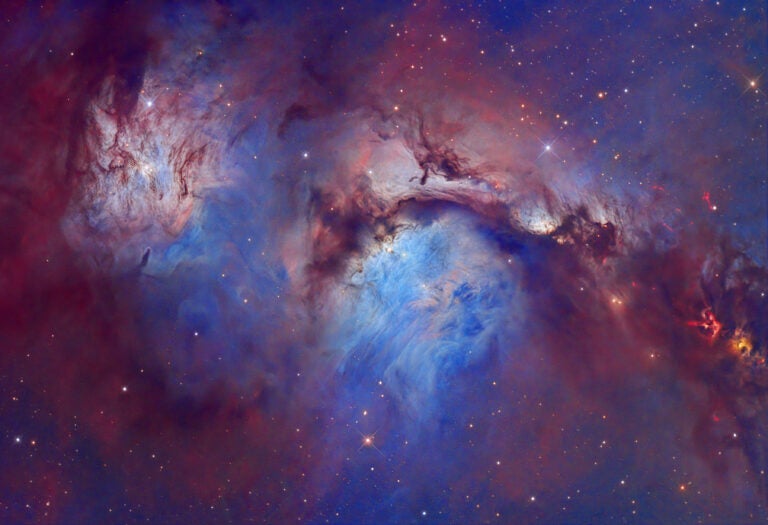Targets for February 4–11, 2016
Small telescope: Open clusters NGC 2266 and NGC 2331
Large telescope: Barred spiral galaxy NGC 2336
Large telescope: Emission nebula Sharpless 2–301
Faint? Small? Perfect!
This week’s small-telescope targets are two open clusters, both of which reside in the constellation Gemini the Twins. You’ll find the first, NGC 2266, 1.8° north of magnitude 3.3 Propus (Eta [η] Geminorum) in a rich Milky Way star field.
This cluster glows at magnitude 9.5 and measures only 5′ across. Through a 4-inch telescope at 100x, you’ll spot two dozen stars, the brightest of which is magnitude 8.9 SAO 78670, which lies at NGC 2266’s southwest end.
Our second open cluster — NGC 2331 — is a bit easier to spot. To locate it, point your telescope 3.1° south-southwest of magnitude 4.4 Tau (τ) Geminorum.
This scattered cluster glows at magnitude 8.5. It measures more than half the diameter of the Full Moon, but it is sparse. A 4-inch scope will reveal only about 20 members scattered across a region 19′ across.
All alone in the cosmos
This week’s first large-scope object is barred spiral galaxy NGC 2336 in Camelopardalis the Giraffe.
Unfortunately, this magnitude 10.4 target sits in a star-poor region, so no easy signpost lies nearby. Find it by heading 15° north-northeast of magnitude 4.6 Gamma (γ) Camelopardalis.
A 6-inch telescope shows a bright central region surrounded by an easily seen halo. The galaxy measures 6.4′ by 3.3′. Through a 10-inch telescope at 200x, you’ll see the central bar.
When you’ve finished with NGC 2336, head to magnitude 12.6 IC 467, which sits 20′ to the south-southeast. This seldom-observed spiral galaxy measures 3.2′ by 1.3′. It will test both your telescope and the quality of the sky above it.
Not-so-obscure catalog
This week’s second large-telescope target is the 301st emission nebula cataloged by American astronomer Stewart Sharpless in his second catalog of such objects. Sharpless 2–301 lies in Canis Major the Large Dog.
To find it, look 3.2° south-southeast of magnitude 4.1 Gamma Canis Majoris. This nebula lies 42,000 light-years from the Milky Way’s center.
An unfiltered 8-inch telescope shows a hazy object 8′ by 7′ with a bright center lying in a rich star field. Insert a nebula filter and your view will improve dramatically. Larger apertures reveal dark regions scattered about the nebula’s face.
Expand your observing at Astronomy.com
The Sky this Week
Get a daily digest of celestial events coming soon to a sky near you.
Observing Basics
Find more guidance from Senior Editor Michael E. Bakich with his Observing Basics video series.

